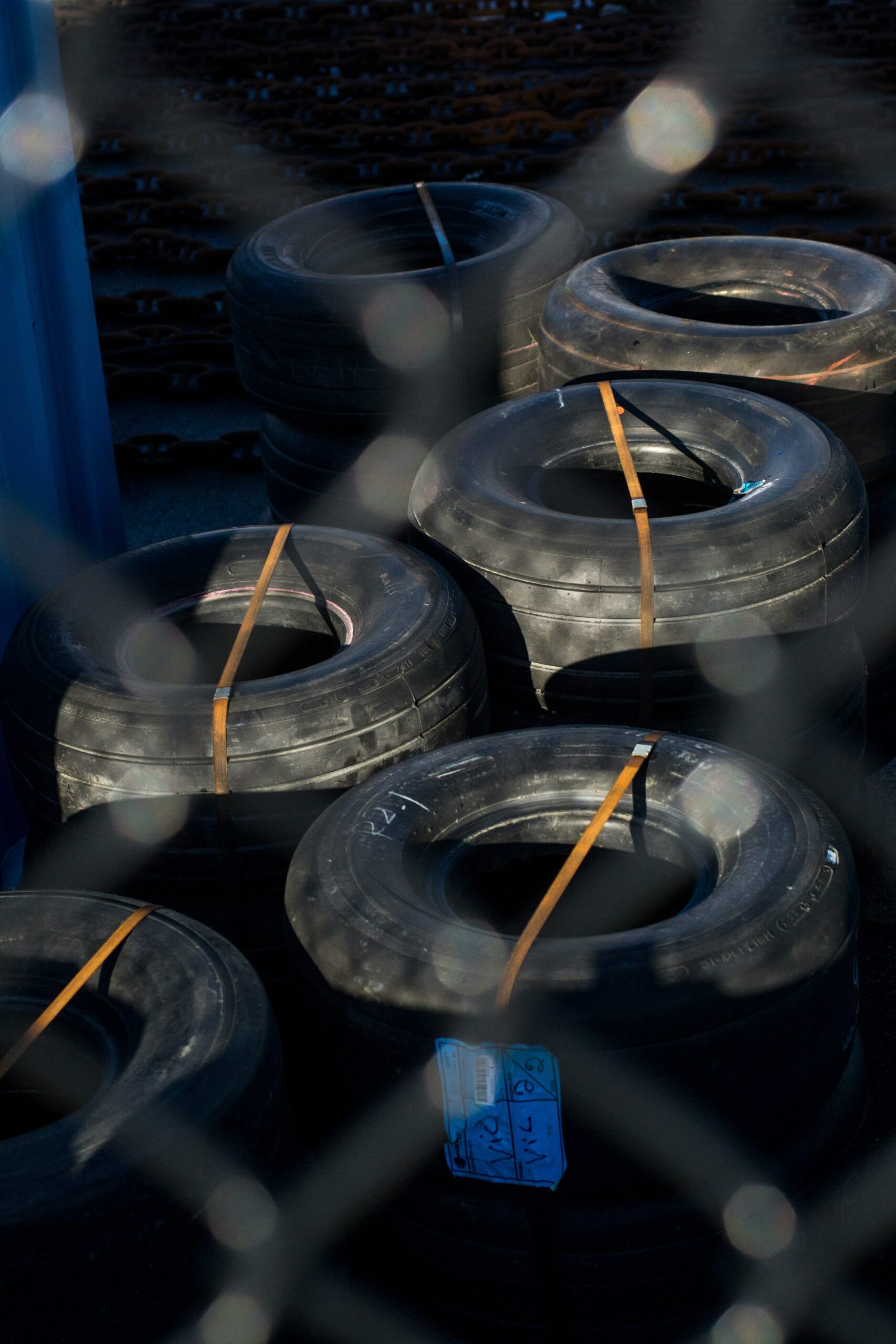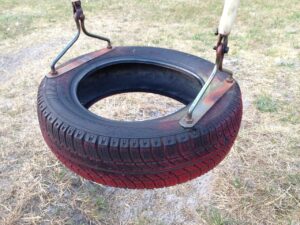
Tire recycling is essential for promoting sustainability and minimizing environmental impact. The growing problem of tire waste has led to innovative and sustainable ways of how to recycle tires.
The process of recycling tires involves shredding or grinding them into small pieces, separating the by-products such as fiber and steel, and selling them as a feedstock for other industries.
Are you looking for a way to reduce your carbon footprint and help the environment? Learn how to recycle tires for a greener planet.
The role of recycling centers and tire retailers is crucial in the lifecycle of passenger and truck tires. They play a significant role in ensuring that the tires are recycled and do not end up in landfills, where they can cause environmental harm.
Tire dealers can also educate their customers on the importance of tire recycling and how they can contribute to the process. Understanding how to recycle tires is the first step in addressing the tire waste issue.
The Growing Problem of Tire Waste
Tire waste is a growing problem that has significant environmental consequences. Tires take a long time to decompose, and when they end up in landfills, they can release harmful chemicals into the environment. Tire fires are also a significant environmental hazard, and they can take weeks to put out.
Recycling tires is crucial in minimizing the environmental impact of tire waste and promoting sustainability. Learning how to recycle tires effectively can mitigate these environmental hazards.
From Waste to Worth: The Tire Recycling Process
Grasping how to recycle tires transforms them from waste to worth. The tire recycling process involves shredding or grinding the tires into small pieces, which are then separated into by-products such as fiber and steel.
The by-products are sold as feedstock for other industries, such as the construction and automotive industries. The ground rubber can also be used to make new tires, playground surfaces, and sports fields.
Key Takeaways
- Tire recycling is crucial in promoting sustainability and minimizing environmental impact.
- Recycling centers and tire retailers play a significant role in ensuring that tires are recycled and do not end up in landfills.
- The tire recycling process involves shredding or grinding the tires into small pieces, which are then separated into by-products such as fiber and steel.
- Understanding how to recycle tires for environmental conservation.
Table of Contents
Table of Contents
The Growing Problem of Tire Waste
Tires are an essential component of any vehicle, but they also pose a significant environmental threat when they become waste. According to recent statistics, over 1.5 billion tires are wasted annually, with the majority of them ending up in landfills or illegally dumped. This waste stream has significant environmental impacts, including soil and water pollution, and greenhouse gas emissions.
Illegal dumping of unwanted tires is a common problem in many areas, and it can have severe consequences. When tires are illegally dumped, they can trap water and create breeding grounds for mosquitoes and other pests. Additionally, they can also pose a fire hazard, as they can easily ignite and burn for long periods.
Flat tires and used tires also contribute to the growing problem of tire waste. Flat tires are often discarded and replaced with new ones, while used tires are frequently disposed of improperly. When old tires are not recycled, they can take up valuable space in landfills and contribute to the overall waste problem.
To combat this issue, recycling tires is an effective solution. Recycling tires can help reduce waste, conserve natural resources, and prevent environmental pollution.
Additionally, recycling tires can create new products and materials, such as rubberized asphalt and mulch, which can be used in landscaping and other applications.
The Role of Recycling Centers and Tire Retailers
Recycling centers and tire retailers, including auto shops and tire shops, play a crucial role in the tire recycling process. They are responsible for collecting used tires and ensuring that they are disposed of or recycled properly. Recycling centers and tire retailers are pivotal in educating the public on how to recycle tires.
When you bring your used tires to a recycling center or tire retailer, you may be charged a nominal fee for disposal or recycling. This fee helps cover the costs associated with collecting, transporting, and processing the tires. However, some recycling centers and tire retailers offer free tire disposal, so it’s worth checking around to see if this is an option in your area.
Recycling centers and tire retailers work together to ensure that used tires are recycled in an environmentally friendly way. The tires are typically shredded and ground down into smaller pieces, which can then be used to make a variety of products, including ground rubber and crumb rubber.
By recycling your used tires, you are helping to reduce waste and promote sustainable living. So the next time you need to dispose of your old tires, consider taking them to a recycling center or tire retailer that offers tire recycling services. Not only will you be doing your part to help the environment, but you may also be able to save money on disposal fees.
From Waste to Worth: The Tire Recycling Process
Recycling tires is a crucial step towards a zero-waste and sustainable living approach. Tires are made of rubber, a non-biodegradable material that can take up to 50 to 80 years to decompose. By recycling tires, we can reduce the amount of waste in landfills and create valuable products like rubber crumb, ground rubber, and even tire-derived fuel. Mastering how to recycle tires is crucial for a zero-waste lifestyle.
The tire recycling process starts with the collection of old tires. You can drop off your old tires at a recycling center or look for special pickups in your municipality. Some tire dealers also offer recycling programs where they will take your old tires for a small fee when you buy a new pair.
Once the old tires are collected, they undergo shredding or grinding. The shredding process involves cutting the tires into small pieces, while grinding involves using a machine to break down the tires into fine particles. The resulting product is called rubber crumb or ground rubber, which can be used in a variety of applications.
Rubber crumb is a versatile material that can be used to make a wide range of rubber products. It can be used as a raw material in the production of new tires, as well as in the manufacturing of rubber mats, playground surfaces, and even asphalt. Ground rubber, on the other hand, is used in the production of tire-derived fuel, which is a cleaner alternative to coal and other fossil fuels.
Beyond Recycling: Innovative and Sustainable Uses
Innovative uses for recycled tires highlight the importance of learning how to recycle tires creatively. Recycling tires is a great way to reduce waste and conserve resources.
But did you know that recycled tires can be used for more than just making new tires? In fact, there are many innovative and sustainable uses for recycled tires that can give them a second life.
One of the most popular uses for recycled tires is in playground surfaces. The rubber from tires is perfect for creating soft and safe surfaces for children to play on. These surfaces are durable, long-lasting, and can be customized to fit any playground design. Recycled tire rubber can also be used to create playground equipment, such as swings and slides, which are both safe and sustainable.
Another innovative use for recycled tires is in construction material. The unique properties of tire rubber make it an excellent material for use in road construction and other building projects. Recycled tire rubber can be used as an additive in asphalt, creating a stronger and more durable surface. It can also be used as a component in concrete, providing a more flexible and resilient material.
Recycled tire rubber is also a popular choice for artificial turf. The rubber provides a soft and cushioned surface for sports and other activities, while also being durable and long-lasting. The use of recycled tire rubber in artificial turf is a great way to reduce waste and conserve resources.
Overcoming Recycling Challenges

Recycling tires can be a challenging process, as it involves dealing with hazardous waste and complying with federal laws and regulations. However, with innovative methods and strict oversight, the process of recycling tires is becoming more efficient and sustainable.
One of the main challenges in tire recycling is solid waste management. Tires take up a lot of space in landfills and can cause environmental damage if not disposed of properly. To overcome this challenge, scrap tire transporters must follow federal laws and regulations to ensure safe and efficient transportation of scrap tires.
Another challenge is scrap tire oversight. This includes enforcing laws and regulations related to scrap tire management and ensuring that recycling facilities are operating in a safe and environmentally friendly manner. To overcome this challenge, federal and state agencies are working together to improve oversight and enforcement action.
Innovative recycling technologies are also being developed to overcome challenges in tire recycling. For example, some companies are using pyrolysis to break down tires into reusable materials such as oil, gas, and carbon black. Other companies are using cryogenic grinding to produce small particles that can be used in various products.
How You Can Contribute to Tire Recycling

Recycling your used tires is a great way to reduce waste and contribute to a more sustainable future. There are various ways you can recycle your tires, including utilizing drop-off locations, local government programs, and auto repair shops.
One of the easiest ways to recycle your tires is by utilizing your local government’s scrap tire program. Many local governments offer programs that allow you to drop off your used tires at designated locations for recycling. These programs are typically free or have a small fee, and they help ensure that your tires are properly recycled.
Auto repair shops are also great places to recycle your tires. Many shops have partnerships with tire recycling companies and can help you dispose of your used tires in an eco-friendly way. You can also check with your local junk removal services to see if they offer tire recycling services.
In addition to these options, some local governments offer special pickup services for waste tires. These pickups are typically scheduled on specific days and require you to leave your used tires at the curb. This is a great option if you have a large number of tires to dispose of.
It’s important to note that tire piles can be a safety hazard and an environmental concern. If you come across a tire pile, report it to your local government or waste tire program. They can help ensure that the tires are properly disposed of and recycled.
The Future of Tire Recycling: Innovations and Impact

Tire recycling is an essential process that plays a critical role in reducing waste and promoting sustainable living. As technology advances, innovative methods for tire recycling are emerging, and these methods have the potential to significantly impact the environment positively. One such innovation is the research and development of new products from recycled tires, such as ground rubber and crumb rubber.
These new products have a wide range of applications, including the manufacturing of automotive products, rubber modified asphalt, and mulch for landscaping. Additionally, recycling technologies are being developed to break down tires into their component parts, such as sulfur-to-sulfur bonds, which can be used in various industrial applications. For instance, cement kilns can use these components as fuel, reducing the need for fossil fuels.
Another significant impact of tire recycling is the prevention of tire fires. Tire fires are a significant environmental hazard that releases toxic fumes and pollutants into the air, soil, and water. Recycling tires reduces the number of tires that end up in landfills, where they can become a fire hazard. Instead, these tires are processed into useful products, reducing the risk of tire fires and their impact on the environment.
The global impact of tire recycling is also significant. By reducing waste, tire recycling contributes to global environmental efforts, promoting sustainable living and reducing the carbon footprint. Furthermore, tire recycling has the potential to create jobs and stimulate the economy, providing a win-win situation for the environment and the economy.
Final Thoughts

Our journey through how to recycle tires shows the impactful steps towards sustainability. Recycling used tires can be a fun and creative way to repurpose them, while also helping the environment.
When recycling tires, it’s important to keep safety in mind. Tires are heavy and can be difficult to handle, so make sure to use proper equipment and techniques. You can also consider working with a professional tire recycling company to ensure that the tires are being recycled safely and efficiently.
There are many ways to recycle tires. One of the most popular uses of recycled tires is to grind them up to create ground or crumb rubber, which can be used in a variety of products, including playground surfaces, athletic tracks, and even new tires.
Frequently Asked Questions

What are the options for tire disposal near me?
If you are looking to dispose of your old tires, there are several options available. Firstly, you can check with your local waste management facility to see if they accept tires and offer a recycling method. Many landfills will take them, although they often charge a fee. Additionally, you can contact local tire shops or auto repair shops to see if they accept old tires. Some may even offer a tire recycling program.
Where can I recycle tires without any cost?
Many tire manufacturers and retailers offer free recycling programs. Check with your local tire shop or manufacturer to see if they have such a program. Additionally, some states have tire recycling programs that offer free tire disposal. Check with your state’s environmental agency to see if they offer this service.
What are the ways to earn money by recycling old tires?
Recycling old tires can be a profitable business. One way to earn money is by selling the recycled rubber to manufacturers who use it to make new products. Additionally, you can start your own tire recycling business and collect old tires from local businesses and individuals. Another option is to sell the tires to retreaders who will reuse them.
Can I recycle tires at my own home, and if so, how?
While it is not recommended to recycle tires at home, there are a few ways to repurpose them. For example, old tires can be used as planters for a garden or as a base for a backyard swing. However, if you are looking to recycle tires, it is best to take them to a professional recycling facility.
How does the process of tire recycling work?
Tire recycling involves shredding the tires into small pieces, which are then processed into various products. The steel and fiber are removed and sold, while the rubber is ground into small pieces and used to make new products such as playground surfaces, athletic tracks, and even new tires.
Are there any eco-friendly methods to repurpose used tires?
There are many eco-friendly ways to repurpose old tires. For example, they can be turned into furniture, such as chairs and tables. Additionally, old tires can be used to make playground surfaces, garden beds, and even insulation.

I’m Chris, a passionate advocate for sustainability, sharing my journey and tips from our vibrant family farm. With a background rooted in zero-waste living and a heart committed to eco-friendly practices, I aim to empower others through my blog. Each post is a blend of personal experiences or a question I have once pondered, and practical advice for those looking to make sustainable choices in their daily lives. Join me in making every step a greener one, as we explore the joys and challenges of living sustainably together.

